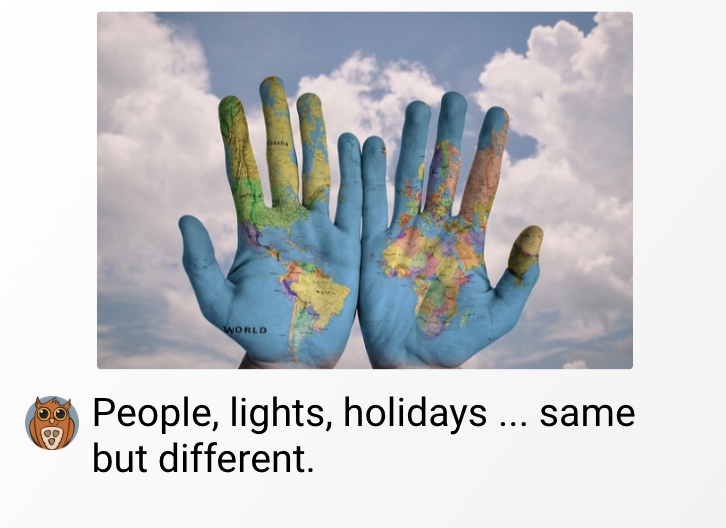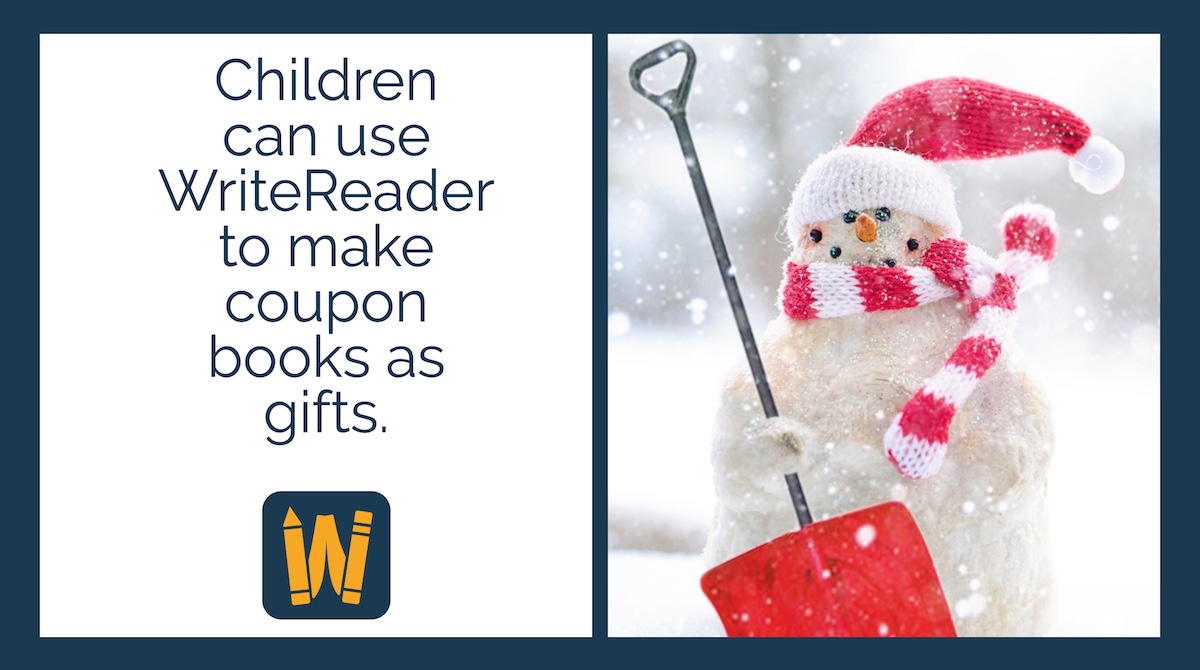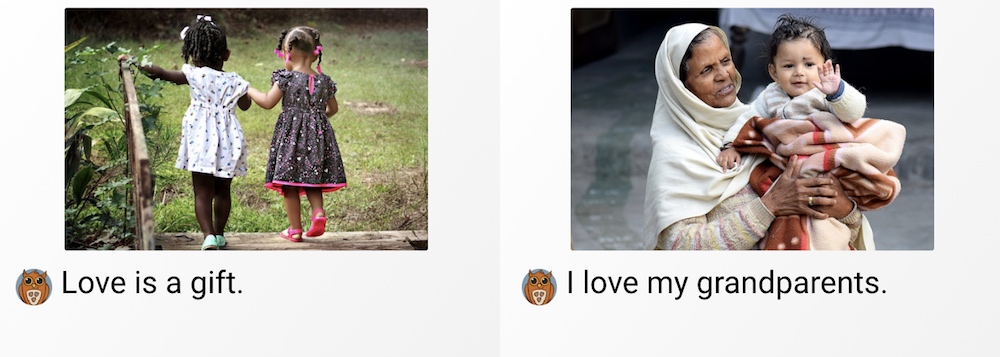In the delightful children’s book Same, Same but Different, we read about two pen pals. Elliot lives in America and Kailash lives in India. As they share pictures and letters, they learn that their lives are similar in many ways as well as different. And so it is with all of us. We come from different countries and may have different traditions but at the core, there are many similarities.
During the winter months, there are many celebrations or festivals where light plays a major role, both symbolically and realistically. People light candles on the menorah during Hanukkah. People light a bonfire at Winter Solstice. And people decorate trees with lights at Christmas. Light is a central theme in many traditions and holidays.
Multiculturalism and Inclusion
Most western countries are very multicultural now. While we still have many national or cultural traditions to enjoy, we can also be curious about other traditions and honor those as well, especially in our classrooms. At the heart of all celebrations are common themes such as light, love, joy, and peace. People from every tradition gather together with family and friends at this time of year, and are thankful for blessings while also sharing with those less fortunate.
An inclusive classroom shows signs of all cultures, languages, and traditions represented in the students. There can be simple clay oil lamps right next to the ’elf on the shelf.’ Children can eat buA±uelos as well as gingerbread men. Additionally, children might like to draw pictures and write stories about their own family’s celebrations and add captions in their first language. The multicultural classrooms of today can be filled with the light of sharing and caring.

Ideas for Writing
With this in mind, here are some seasonal writing ideas for your classroom that are inclusive of all children, regardless of their nationality, culture, or faith:
- Read or listen to the book, Same, Same but Different by Jenny Sue Kostecki-Shaw as a mentor text. Then, students can research and write about about the different winter holidays and festivals; and compare what is the same and what is different from their own traditions.
- Discuss the importance of light and its uses throughout history. Next, students can learn and write about the symbolism of light in aboriginal, indigenous, or ancient cultures. Teachers may wish to bring in flameless candles and share the stories around the ’fire.’
- Children can use WriteReader to create coupon books as gifts. They could give the books to neighbors, relatives, or friends. Coupons could be for doing helpful tasks such as shoveling snow from the sidewalk, taking out the garbage or walking the dog when it’s icy or cold, babysitting younger cousins, or reading to/with siblings.

- Students can use Google Translate to learn how to say Merry Christmas or other seasonal greetings in many languages. They can then copy and paste both languages into their WriteReader book.
- By creating an international keyboard, students can write about their family traditions in their first language. They can then use their new/additional language to write the same message in the ’adult’ writing field.
- Acrostic poems can be written about major holiday themes, such as light, peace, and giving. One page is given for each letter in the word. (eg. J is for …. O is for …. Y is for ….)
- Children can write about their talents and gifts (eg. helpful, kind, funny) that make them special in one field, and use the other writing field to write about how they can share those gifts with others.

- Students can create cards for important people in the school outside of their own class, such as the secretary, principal, itinerant teachers (Special Ed, ESL, Music, etc.), and support workers (educational assistants, custodians, counsellor, etc.).
- Children can write thank you notes to grandparents for coming to the school concert, teaching them how to bake holiday treats, presents that arrived in the mail, or to tell them how much they miss them. Be sure to include voice recordings! WriteReader books can be shared by turning the book sharing link on, and copying and pasting the link into a text or email.
- Children can engage in writing over the holiday break too by writing a recipe book with parents or grandparents about their favorite holiday food such as samosas, wontons, or latkes. Both young and old can record the reading as a heartwarming memento. This should be done after making and eating it first, of course!
Shine Your Light!
Teachers are change-makers. By acknowledging and respecting the traditions of all of our students, families, and colleagues, we can shine a light on the joyful celebrations of all during the holiday season. Our differences can create rich learning communities and our similarities unite us. Let your light shine, and share it with the world!
